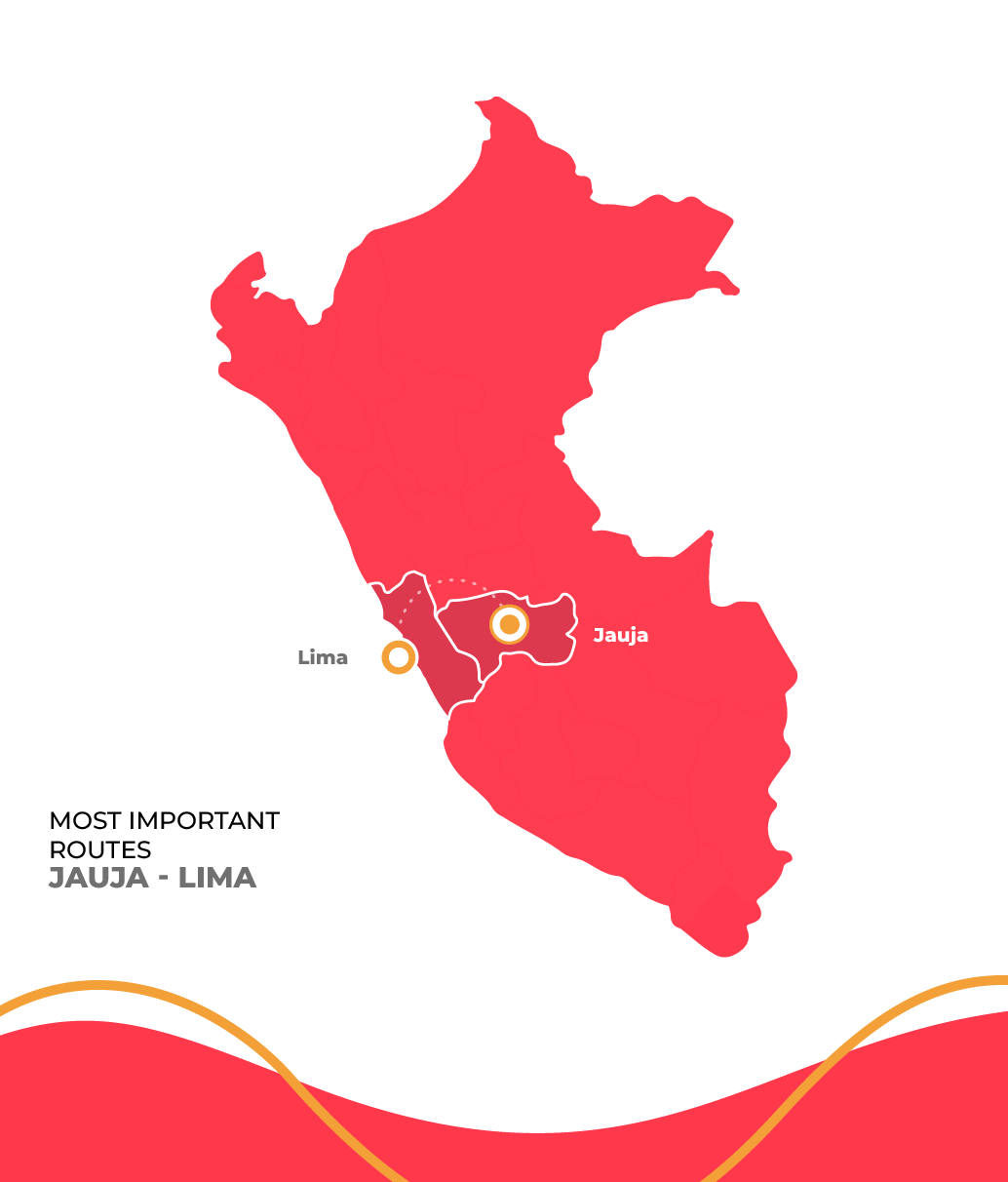Buy Jauja to Lima Bus Tickets Online - Unlock Extra Savings with redDeals on redBus
Reserve a bus from Jauja to Lima with redBus, Peru, and grab exclusive redDeals. Choose from 170 deals on 43 bus operators and avail yourself of discounts up to 25% on your bus travel!
Why book a Jauja to Lima bus with redBus?
You can also time-to-time redBus offers while booking your bus tickets online from Jauja to Lima. Follow a simple, fast and secure bus booking procedure. This helps save time and also helps to create a joyful travel experience!
About Lima
Lima is one of the most interesting cities in Peru, not only because of its tourist attractions but also because of the warmth of its people and its rich cuisine. It is undoubtedly one of the best tourist destinations for any traveler. If it is the first time that you are traveling to this city, the preferable thing to do would be to stay for a minimum of 3 days to help you explore it thoroughly.
About Lima
"The City of Kings", as Lima is known, was founded in 1535 by Francisco Pizarro and became the center of Spanish power in Peru, during the colonial period.The urban planning of Lima is one of the colonial models in South America. Lima is known for its social, economical and cultural growth and stands out as the cultural center of Latin America; besides that, Lima is the home of San Marcos National University, the most ancient from America, founded in 1551.Lima is famous for being the viceroyalty capital of Peru and one of the cities most important of South America in the spanish regime period; after its independance in 1821 the city became the republic's capital. Before this period, the Baroque and Neoclassical style took the power on the streets, impregnating those architectural styles in the main constructions. The capital counts a high variety of tourist attractions that combine history and modernity, as you can see on the Historical Center. Another strong point of Lima is the food, there are many restaurants from the 3 Peruvian regions where you can live a complete gastronomical experience, given that the population is multicultural and mostly migrant. Live Peru from one of its corners, and enjoy tasting the culture that Peru offers you!
Lima, the capital of Peru, is a vibrant city known for its rich history, coastal landscapes, and world-renowned gastronomy. Visitors can explore colonial architecture, enjoy fresh seafood dishes like ceviche, and discover cultural landmarks such as Plaza Mayor, Miraflores, and Barranco.
Weather in Lima
Lima has a mild and humid climate throughout the year:
-
Summer (December - April): Temperatures range from 20°C to 30°C (68°F to 86°F), with sunny days.
-
Winter (May - November): Cooler temperatures between 14°C and 19°C (57°F to 66°F), with mist and high humidity.
Hotels in Lima
Casa Andina Premium Miraflores
-
Location: Av. La Paz 463, Miraflores.
-
Price: From S/ 350 per night.
-
Description: A modern hotel with comfortable rooms, a gym, and an excellent restaurant.
Selina Lima
-
Location: Av. Alcanfores 465, Miraflores.
-
Price: From S/ 150 per night.
-
Description: A stylish and budget-friendly hotel with a coworking space and bar.
Restaurants and Bars in Lima
Central
-
Location: Av. Pedro de Osma 301, Barranco.
-
Average Price: S/ 500+ per person.
-
Description: One of the world's top restaurants, offering a unique tasting menu inspired by Peru's ecosystems.
La Mar Cebichería
-
Location: Av. La Mar 770, Miraflores.
-
Average Price: Between S/ 80 and S/ 150.
-
Description: A popular seafood restaurant famous for its ceviche and tiraditos.
Gastronomy of Lima
-
Ceviche: Fresh fish marinated in lime juice, accompanied by corn and sweet potato.
-
Lomo Saltado: Stir-fried beef with onions, tomatoes, and fries, served with rice.
-
Pisco Sour: Peru’s iconic cocktail made with pisco, lime juice, and egg white.
Tourist Attractions in Lima
-
Plaza Mayor: The historical center with colonial buildings like the Government Palace and Cathedral.
-
Parque Kennedy: A lively park in Miraflores known for its cats and artisanal markets.
-
Huaca Pucllana: An ancient adobe pyramid located in the heart of Miraflores.
Important Dates in Lima
-
Peru’s Independence Day (July 28-29): Parades, fireworks, and traditional festivities.
-
Lima Anniversary (January 18): Celebrations with music and cultural events.
Things to Buy in Lima
-
Alpaca Wool Products: Sweaters, scarves, and ponchos made from high-quality alpaca wool.
-
Peruvian Coffee and Chocolate: Premium products from different regions of Peru.
-
Handcrafted Silver Jewelry: Unique designs inspired by Andean culture.
Bus Operators for the Route
Departure and Arrival Terminals
In Moquegua:
In Lima:
